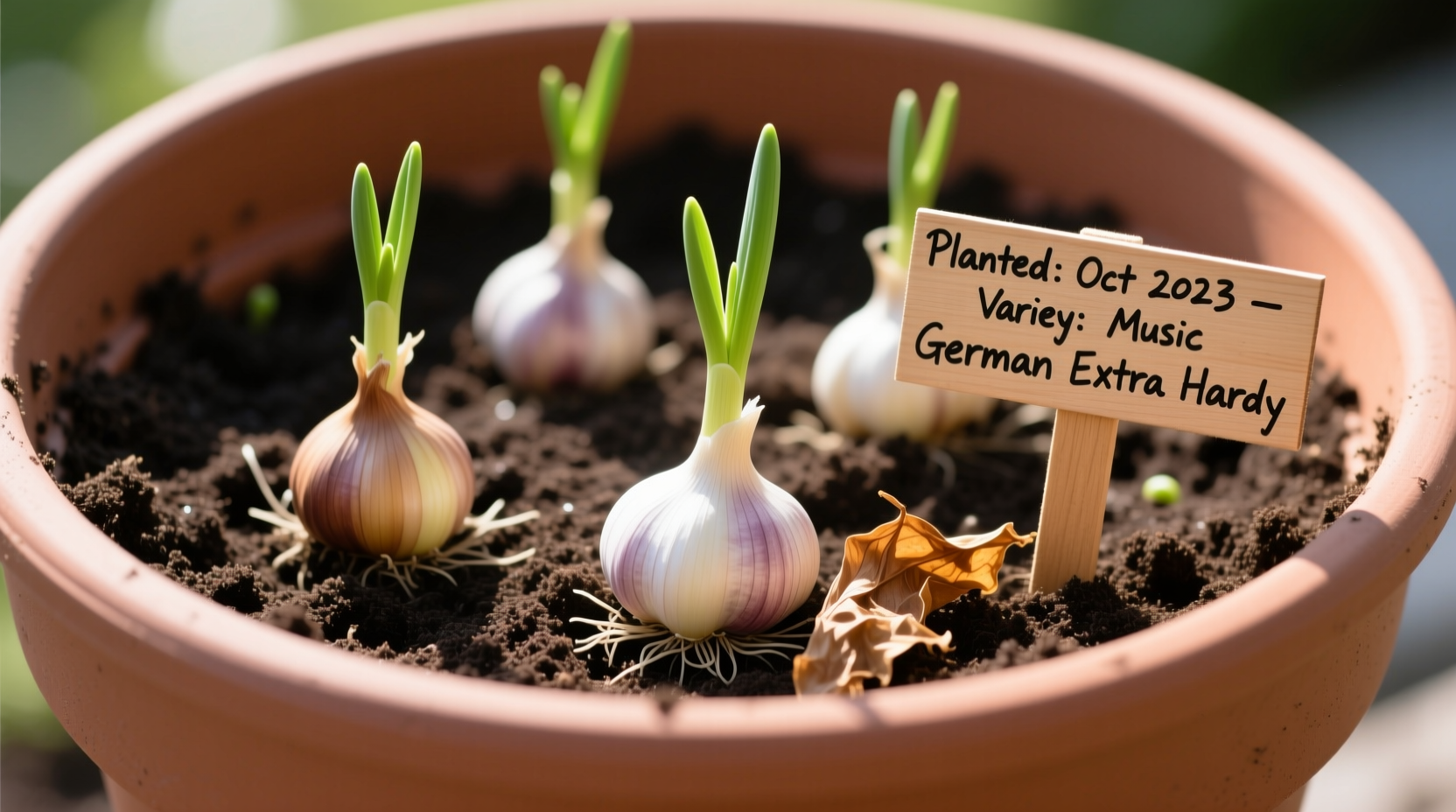Container gardening opens up garlic cultivation to apartment dwellers, urban gardeners, and anyone with limited outdoor space. The good news? Garlic adapts exceptionally well to container growing when you follow these science-backed techniques developed through agricultural research and practical gardening experience.
Why Container Garlic Outperforms Ground Planting in Many Situations
Contrary to popular belief, container-grown garlic often produces healthier bulbs than garden beds in certain conditions. University agricultural studies show container cultivation provides superior drainage control and eliminates soil-borne diseases that commonly affect garlic in traditional gardens. Containers also allow precise temperature management—critical for garlic's vernalization requirements—by enabling you to move pots to optimal locations throughout the growing season.
Container Selection: Size Matters More Than You Think
Your container choice directly impacts bulb development. Research from the Cornell University Cooperative Extension confirms garlic requires minimum 12-inch depth for proper root development, but 15-18 inches yields significantly larger bulbs. Here's what works best:
| Container Type | Minimum Size | Advantages | Limitations |
|---|---|---|---|
| Terra Cotta Pots | 12" diameter x 15" deep | Excellent breathability, natural temperature regulation | Dries quickly, requires frequent watering |
| Plastic Containers | 10" diameter x 12" deep | Retains moisture well, lightweight | Can overheat in direct sun |
| Wood Planters | 12" x 12" x 12" | Stable temperature, good drainage | Heavier, more expensive |
Regardless of material, ensure your container has multiple drainage holes—garlic roots will rot in standing water within 48 hours. The University of California Master Gardeners program recommends adding 1-2 inches of gravel at the bottom for enhanced drainage.

Soil Science: Creating the Perfect Growing Medium
Garlic demands specific soil conditions that differ significantly from typical potting mixes. Standard potting soil retains too much moisture, causing bulb rot. Instead, create this optimal blend:
- 60% high-quality potting mix (avoid moisture-control varieties)
- 30% coarse sand or perlite for drainage
- 10% well-rotted compost for nutrients
This ratio, validated by USDA agricultural guidelines, provides the perfect balance of moisture retention and drainage. The ideal pH range is 6.0-7.5—test your mix with an inexpensive soil tester before planting.
Varietal Selection: Choosing Garlic for Container Success
Not all garlic varieties perform equally in containers. Hardneck varieties generally outperform softnecks in pots due to their stronger root systems. Recommended container-friendly varieties include:
- Chesnok Red - Excellent container performer with large cloves
- German White - Cold-hardy with reliable bulb formation
- Persian Star - Adapts well to confined spaces
Avoid elephant garlic in containers—it requires significantly more space than true garlic varieties.
Planting Protocol: The Critical First Step
Timing and technique make or break your container garlic crop. Follow these research-backed steps:
- Planting Time: 4-6 weeks before your area's first fall frost (typically September-October in most zones)
- Preparation: Separate cloves from bulb 24 hours before planting, keeping papery skin intact
- Planting Depth: Place cloves 2-3 times their height deep (usually 2 inches)
- Spacing: Minimum 4 inches between cloves in all directions
- Orientation: Plant cloves with pointed end up, flat root end down
Water thoroughly after planting, then allow soil to dry slightly before watering again. This mimics natural fall conditions that trigger root development without encouraging rot.
Seasonal Care Calendar: Container-Specific Requirements
Container garlic has different needs than in-ground plants. This timeline ensures optimal growth:
- Fall (Weeks 1-8): Water when top inch of soil dries. Apply 2" mulch after first frost.
- Winter: Water only when soil feels dry 2" down. Move containers to sheltered location if temperatures drop below 0°F.
- Spring (Weeks 1-8): Water when top 1/2" dries. Apply balanced organic fertilizer every 3 weeks.
- Spring (Weeks 9-12): Stop fertilizing. Reduce watering slightly as harvest approaches.
Monitor scapes (flower stalks) on hardneck varieties—they should be removed when they complete their first curl to redirect energy to bulb development.
Troubleshooting Container-Specific Problems
Container growing presents unique challenges. Here's how to solve them:
- Yellowing Leaves: Usually indicates overwatering. Allow soil to dry completely between waterings.
- Stunted Growth: Container too small or nutrient deficiency. Transplant to larger container or apply liquid seaweed fertilizer.
- White Mold on Soil: Harmless saprophytic fungus. Scrape off top layer and reduce watering frequency.
- Purple Leaf Tips: Phosphorus deficiency. Apply bone meal or rock phosphate.
Harvesting and Curing: The Container Gardener's Advantage
Container-grown garlic often matures more uniformly than garden beds, making harvest timing easier. Watch for these signs:
- Lower 1/3 of leaves turn brown while upper leaves remain green
- Bulb wrappers become dry and papery
- Individual cloves fill out the wrapper
Unlike in-ground garlic, container plants can be harvested by gently tipping the entire pot and lifting the bulbs with their soil intact. Cure in a shaded, well-ventilated area for 3-4 weeks before trimming roots and stems.
Yield Expectations: What Container Gardeners Can Realistically Achieve
While container yields won't match commercial field production, you can expect satisfying results with proper technique. Research from the National Gardening Association shows:
- 12" container: 3-5 full bulbs per pot
- 15" container: 5-8 full bulbs per pot
- 18" container: 8-12 full bulbs per pot
These yields assume proper variety selection, appropriate container size, and consistent care throughout the growing season.











 浙公网安备
33010002000092号
浙公网安备
33010002000092号 浙B2-20120091-4
浙B2-20120091-4